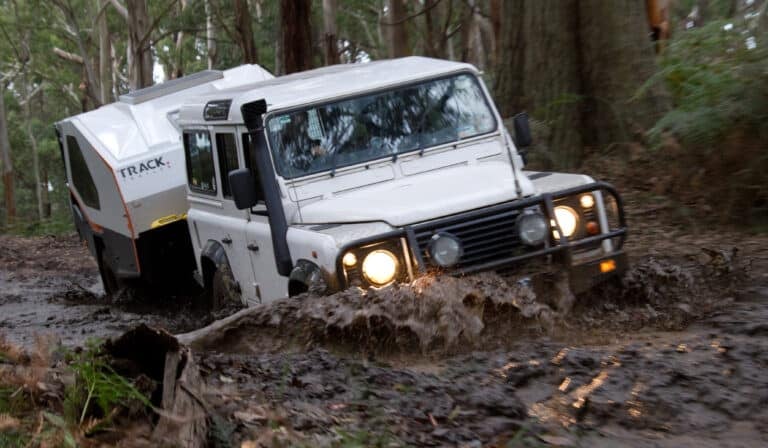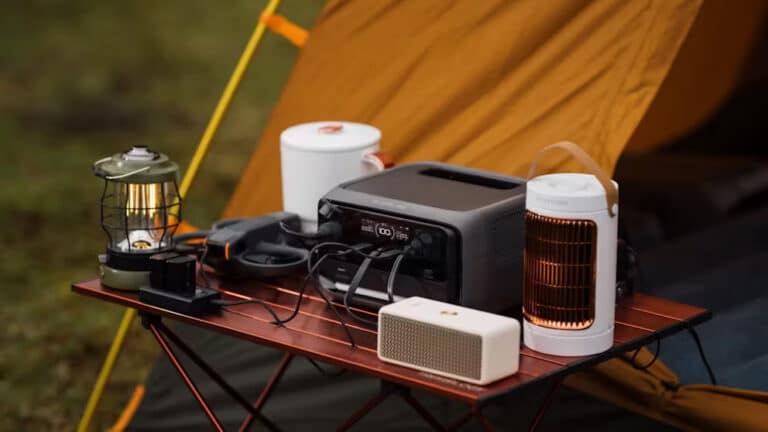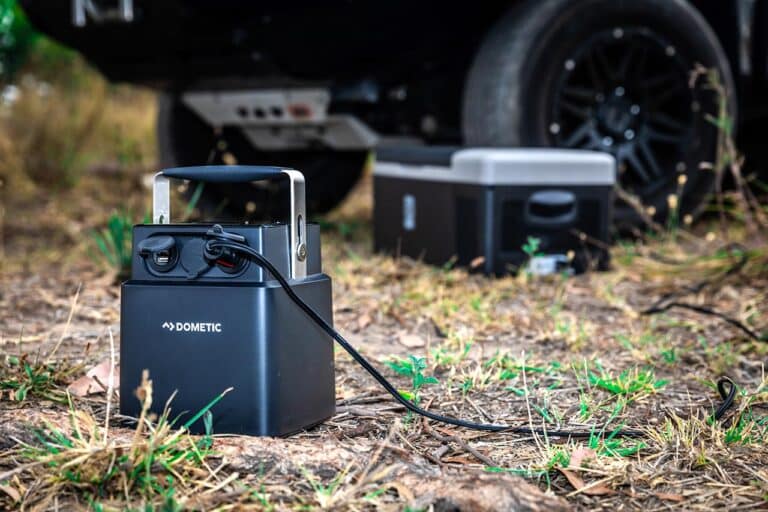Are vehicle manufacturers pulling the wool over our eyes in the legal department of braked towing?
With the proliferation of vehicles rated to 3,500kg of braked towing over recent years, are vehicle manufacturers playing smoke and mirrors with their published braked towing capacity?
Generally it’s the 4X4 vehicles and in particular the 4X4 utes and dual cab utes which are most commonly awarded this esteemed badge, effectively creating the perception that you are able in fact, to tow a 3,500kg caravan.
So we’ve decided to test the theory and look at one of the big players in the market – The Ford Ranger.
Case Study:
The Ford Ranger
It’s billed as class-leading towing capacity of 3,500kg, so lets take a look at some of the facts. We already know it can tow 3,500kg right? Wrong… and we’ll get to that in a minute.
GVM or Gross Vehicle Mass. In simple terms, this is the most that a vehicle can weigh with all its occupants, fuel, fridge, holiday gear and the dog.
Kerb Weight – Unlike GVM, kerb weight is the unladen vehicle weight.
GCM or Gross Combined Mass – The maximum amount of weight that both the vehicle and its trailer can weigh.
Ball Weight – The force exerted downwards on a vehicle’s tow-ball by a caravan or trailer.
Taking a look at the Ranger itself, the published GVM is 3,200kg with a GCM of 6,000kg. Assume we’re towing the maximum trailer weight of 3,500kg, this will drop our GCM down to 2,500kg. This is the maximum the Ranger can now weigh.
If we now subtract the kerb weight of 2,271kg from the remaining GCM of 2,500kg, we’re left with a paltry 229kg to play with. We haven’t even factored in the ball-weight of the caravan yet and that 229kg needs to cater for this as well as any aftermarket products such as bull-bars, tow-bars, fridges and the like.
The rule of thumb on ball weights is that it should be within 10% of your total trailer weight. Without even so much as a mars bar in the fridge of your caravan, assume that the ball-weight comes in at around 350kg of downward force added to your GCM. Technically, this means your vehicle and caravan combo has moved into illegal weight territory and you’re not even in the drivers seat yet, so remember – leave the dog behind.
Whilst we’ve used the Ford Ranger as an example in this instance, we’re pretty damn sure it isn’t the only naughty kid in the class, but with more and more vehicle manufacturers upping the ante in the braked towing department, we wonder if there will be any wool left on the sheep’s back.
So before you hitch up next time, remember to have a think about the overall weight of your set-up and whether you could be pushing the boundary of weight legalities.













Please if you are going to publish information like this get the facts correct.
A light vehicle under the Australian Regulations does not have a GCM.
Light vehicles have a “Towing Capacity”. Heavy vehicles have GCM.
The Ford Ranger you identified has a GVM of 3200kgs.
The Ranger has a Towing Capacity of 3500kgs. This is subject to the towbar package fitted.
The Ranger alone can weigh a maximum of 3200kgs (GVM). This does include the information you provided above about load people and dog. It will also include any load imposed by the trailer as downforce on the towbar.
The Ranger can still tow a trailer upto 3500kgs. The 3500kgs includes the total or Aggregate Trailer Mass (ATM) of the trailer. This is defined as the mass transmitted to the gorund through the tyres AND any downforce on the tow bar.
I have been involved in policing and providing advice on these and similar regulations for 30 + years and know it is difficult to understand.
Hi Malcolm,
Why does the Ford official spec sheet for the Ranger have the Gross Combined Mass (inc braked trailer) listed in Vehicle Mass with this exact wording and it states 6000Kg?
Essentially you are saying the vehicle cant exceed its GVM which is 3200Kg on its own and then you can add the trailer 3500Kg max. Assuming 10% tow ball weight is included in the 3200, that still means the Ranger is 3200 and the trailer wheels would be 3500 – 10% (350Kg) so all up it would be 3200 + 3150. Is that legal?
Malcom
You are incorrect, this only applies to vehicle where the manufacture does not state a GCM.
Extract from National towing regulations, please refer to where it states “Owners of 4WDs and light commercial vehicles should also be careful that they do not exceed the Gross Combined Mass (G.C.M.) of the vehicle.”
In December, 1998, agreement was reached by all State’s Ministers of Transport to implement national towing regulations. In essence, the national rules state that “A motor vehicle with a Gross Vehicle Mass (G.M.V.) not exceeding 4.5 tonnes must not, without the approval of an authority, tow a trailer with a mass (including any load) exceeding;
The capacity of the towing apparatus fitted to the vehicle, or A relevant maximum trailer mass specified by the vehicle manufacturer.”
Put simply, the most you can tow is the amount specified by the vehicle manufacturer or the capacity of the towbar – WHICH EVER IS LEAST.
If you want to know how much your vehicle can tow, firstly check the owners manual or vehicle sales brochure for the manufacturer’s towing recommendations. Secondly make sure that the towing capacity is as least as much, if not more, than the mass of the trailer, including its load. If you are unsure how strong the towbar is, have a chat to a reputable towing equipment specialist.
In the case where a motor vehicle manufacturer has not specified a maximum towing mass, the limit is stated to be:
1.5 times the unladen or kerb mass of the motor vehicle if the trailer is fitted with brakes; or
The unloaded mass of the motor vehicle if the trailer is not fitted with brakes.
It should be noted, however, that the above will rarely apply as apart from using a truck, just about every vehicle that is likely to be used for towing a caravan, boat trailer, horsefloat or similar has a manufacturer’s towing recommendation.
Owners of 4WDs and light commercial vehicles should also be careful that they do not exceed the Gross Combined Mass (G.C.M.) of the vehicle. The GCM refers to the maximum vehicle plus its load, including a trailer, is permitted to weigh. It is possible that when a motor vehicle is loaded with, for example, five adults, their luggage and camping gear that the maximum allowable trailer mass has to be reduced so as to not exceed the GCM.
Please let me direct you to SA Light Vehicle regulations – https://www.sa.gov.au/__data/assets/pdf_file/0003/6375/MR25-Light-vehicle-towing-trailer-regulations-GVM-4.5-tonnes-or-less-8.14.pdf
Towing Mass Limits
The maximum mass that can be towed by a vehicle is
dependent upon a number of criteria. The loaded
mass of a trailer or caravan must not exceed:
1. The rated capacity of both the tow bar and tow
coupling.
2. The towing mass specified by the vehicle
manufacturer, or the GCM (Gross Combination
Mass) specified on the vehicle’s registration
certificate.
I could keep going but im wasting time. Blunt of it is, if the manufacture states a GCM you cannot exceed it, if they don’t state one then you go by towing capacity, if no towing capacity you must not exceed 1.5 times the unlaiden weight (kerb) of the vehicle.
Malcom needs to do some proper research. You look stupid when you correct people with incorrect statements
Why are these weights made so difficult to understand why can’t we have something that makes sense to the average caravan user instead of needing a uni degree to understand it all.
Come on Malcolm, we are all waiting for your reply please!